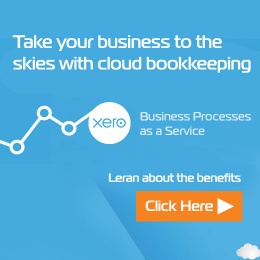

Let's Chat!
Tailoring the right solution for each business is what we are passionate about. Based on an initial chat with you, we'll be able to prepare a unique proposal for you and your business. We are based in Brisbane
Take a moment to connect with us using the form below, or call us directly on:
1300 255 337 (Mon. to Fri. 10 am - 4 pm):
Use recurring transactions
Recurring transactions allow you to save time and remain consistent. They may be set up for anything but in particular should be set up for all regular payments and deposits. In particular, direct debits such as loan repayments, insurances and rent. In MYOB recurring transactions may be set up as: a) templates only so that you have and easy reference point when a bill comes in this is useful for semi-regular bills; b) to flag a specified user on their dues date so specific details may be changed prior to posting or c) so they record automatically on the due date. These entries can be set up to be recorded weekly, monthly or annually, and can be set to be recorded a specific number of times or until a certain date. I would be lost without this feature and set it up regularly for all my clients.
Use default account codes in supplier & customer card files
Linking expense accounts to specific supplier card files ensures consistency and is a great time saver when processing. It is most easily done when you set up the supplier card for the first time. You can also choose to override the account specific GST code at this point if you supplier is not registered or perhaps overseas. I find this really useful in linking superannuation fund card files to the liability account, to prevent incorrect coding to an expense when paying super liabilities.
Use 'aba' Files to pay your creditors & staff
I love 'aba' files particularly when it comes to wages. All you have to do is set up the staff member's bank account details on their card file. When entering the pay run flag the transaction to pay electronically. This will prompt you to create an 'aba' file (electronic payment batch) at the end which you can then import directly into your online banking statement. In this way multiple payments can be made at once saving you a lot of time. This process can be automated even further depending on the version of software you are using. You can use the same process to pay multiple creditors.
Email employee payslips and PAYG payment summaries
Keep up with your legislative requirements by automatically emailing employee payslips and year-end PAYG payment summaries directly from your accounting software, not only saving time but reducing paper usage. There is no need to create duplicate copies since the originals are safely saved on your hard drive.
Import bank statements!
One of the biggest headaches for clients at the end of period is hunting down bank statements and making sure all of the entries have been recorded. Did you know that bank statements can be electronically imported directly into your accounting software (in some systems such as Xero this is done by automated feeds directly from your bank cutting processing time even further).If you have pre-entered transactions in your software, they will automatically be matched with those on the imported bank statement's and marked as 'cleared for reconciliation', saving time during the bank reconciliation process.
Why not email sales invoices to your debtors
Emailing invoices and monthly statements directly from your accounting software is a great time saver as there is no need to print or save the invoices to file and then open your email software to attach and send. An added advantage is the sooner it is received, the sooner you may be paid, and if your email program notifies you of delivery/read receipts then there can be no excuses it was lost in the mail or not received. This feature is even more sophisticated with some of the cloud based systems that allow you to create and send the invoices directly from your smart phone while you are standing in front of your customer.
Automate BAS Reports
Any software system worth its salt will enable you to pull GST data directly into a GST report. In MYOB, you can manually setup the BASlink according to the businesses unique set of GST codes. This then allocates to the correct fields and creates a BAS pre-populated form. This information can then be transferred directly to your ATO Business Activity Statement. A word of warning, always review your GST ledger accounts (use the Detailed GST audit reports to ensure the accuracy of the information entered.
Set up to-do lists & alerts for stock & contact
Streamline your debt collection and never run low on stock again by setting alerts to remind you to order when items stock levels are low, or to send an invoice to a customer on a specific day. Set up to-do lists that display when you open your data file, allowing you to review outstanding receivables and payables at a glance, as well as any expiring discounts you may want to take advantage of.
Whilst this information is most specific for MYOB users, similar features are available in most other accounting packages. Being more efficient with your accounting software will help save your bookkeeper time and you money, enabling you to focus more on your business.

Subscribe by email and instantly get FREE Illustrated eBook. Adequate ‘positive’ cash flow is essential for the survival of any business, yet this is something that over 50% of small business owners struggle to manage.


